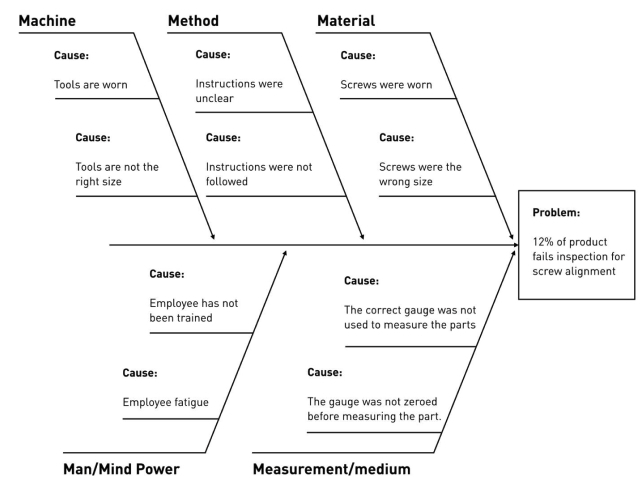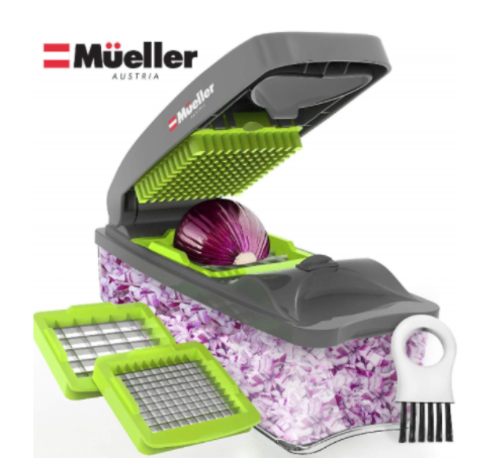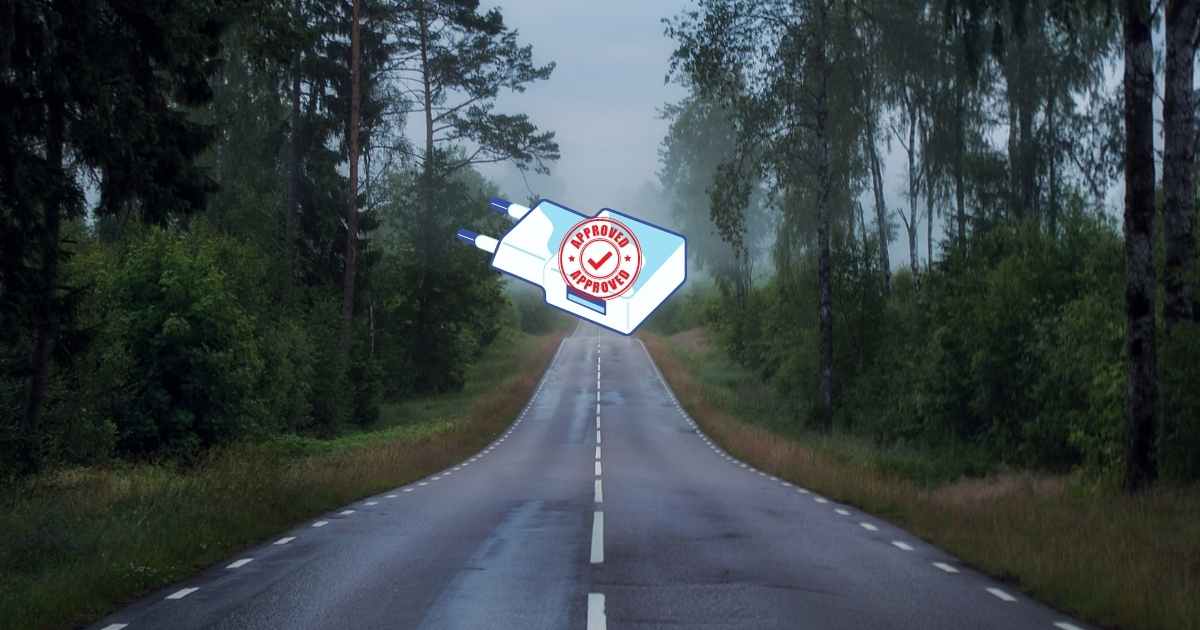[ad_1]

About two or thrice a month, a consumer tells us about critical points they’ve skilled with a sure product, they usually ask if we may also help repair these product high quality points. In some instances, it’s comparatively fast and straightforward. In others, it could contain deep adjustments, together with a re-design of the product itself!
Understanding the trigger(s) earlier than making an attempt to repair them
If there’s a seemingly apparent cause for the standard challenge, go forward and work on it.
For example, if two components which can be glued collectively are inclined to separate after a number of weeks, the glue picked by the producer might be an issue. From there, comply with logical steps:
- Collect data, and most often, you will want to select one other glue.
- Put some samples along with the brand new glue and ship them to a reliability testing lab for validation that it’s going to do the job as wanted.
- Doc that new requirement (what glue to make use of) and arrange sufficient testing to confirm it.
If there isn’t any one trigger that appears like an apparent candidate, it’s good follow to attract a trigger & impact diagram and brainstorm potential points. Right here is an instance (Supply).

Be aware: I wrote earlier than a few full course of for guaranteeing a product high quality defect is mounted on the root and is much less more likely to recur sooner or later (see How To Fill Out an 8D Report and Repair a Downside in a Manufacturing unit).
3 frequent classes of causes of product high quality points
Now, there are lots of kinds of situations, relying on the kind of challenge. Let’s take a look at three frequent classes of causes of product high quality issues.
a) A comparatively easy manufacturing course of challenge
Let’s say a product consists of a whole lot of equipment that must be packed in the correct mix and the precise quantity. In a standard guide course of, there’ll in all probability be errors about 2 to eight% of the time. From there, the answer may contain both of those approaches:
- Involvement of a course of engineer who will design easy tooling to information the operators. For instance, the operators must put together a “equipment” (and, if one thing is lacking, will probably be instantly seen). For even higher management, the packing containers could possibly be weighed earlier than delivery. It’s an affordable answer, but it surely takes administration to vary the operators’ habits — and, in case of a giant rush, they are going to in all probability skip that kitting step.
- Funding in an computerized packing machine that may handle particular/complicated assortments. This necessitates an outlay of money, however it could present return on funding. It doesn’t name for a lot administration effort, however engineers might want to work on its setup in addition to preventive upkeep.
None of that is very complicated. It may possibly usually be carried out inside a month.
There are lots of such points, reminiscent of:
- A drilling fixture permits the operator to position the half in a number of instructions (calling for mistake proofing),
- Manufacturing operators haven’t been skilled correctly, and the strategy hasn’t been documented, resulting in inconsistent work,
- A mildew was signed off although it generates defects, and it must be adjusted,
- And plenty of, many others.
b) A fancy manufacturing course of challenge
Some immature processes can’t produce constantly good high quality merchandise. Faulty components must be sorted out, and in some instances 20% or extra of the components are unacceptable. That’s a supply of frustration for purchasers since a few of these unhealthy components will definitely go undetected and be shipped out. It’s also a supply of very excessive prices for the producer.
In some instances, it’s not even positive there’s a answer. Bear in mind Apple discovered a provider who was assured they may carry sapphire glass into mass manufacturing, a number of years in the past? That provider tried very onerous, however the technical obstacles proved unsurmountable they usually went bankrupt.
These points usually come up in bodily & chemical processes that contain a whole lot of variables. Introducing a change may lead to worse total points.
To simplify, there are a number of colleges of thought right here, however a logical method in a number of steps would seem like this:
- Attempt to study as a lot as potential in regards to the course of by doing OFAT (altering just one issue at a time) experiments and observing the outcomes. (If that doesn’t work, you will want to vary a number of elements at a time, however the interactions could also be very onerous to watch correctly, and superior statistics can be wanted.)
- If you will use superior statistics, ensure you comply with a number of fundamental guidelines, as specified by this text by skilled guide Brad Pritts.
- Use the statistical instruments related to the character of your knowledge. They need to allow you to mannequin the impacts of a number of variables and their interactions on the similar time, in an effort to discover an ‘optimum’ setup and environmental variables.
Be aware: if doing a whole lot of experiments is dear in supplies or time, you will want to do a DoE (Designs of Experiments).
c) The design of the product, because it was developed, was not correctly examined & validated
This can be the No. 1 cause for poor high quality outcomes, and but most individuals don’t give it some thought.
I described an instance earlier than, in How Dangerous Product Design Results in Many High quality Points:
One of many merchandise was “of low high quality”, the importer informed us, primarily based on evaluations he noticed on-line:
- The gadgets labored a number of instances after which stopped working altogether.
- It appears one thing is burning contained in the product when it’s working, and it produces a foul scent.
- The gadget is a bit noisy when it’s working.
Every of those 3 points got here from errors within the product design & growth part:
- The product isn’t sturdy, and the stress of regular use is sufficient to make it fail early in its life. The prototypes have been in all probability not despatched for accelerated reliability testing, to search out their weaknesses and handle them.
- {An electrical} part might be under-rated, and that’s what results in burning smells. The R&D crew in all probability didn’t work intently with the purchaser, to ensure the precise part was specified within the BOM.
- Low cost mechanical parts (in all probability bearings) trigger the noise. Once more, low-cost elements have been picked, and usefulness/efficiency testing was in all probability not carried out.
And that is only a small fraction of the problems which will come up if product designers skipped essential steps.
If a design FMEA (in essence, a threat evaluation adopted by an motion plan) was not developed, no one actually is aware of what may go flawed. Most worryingly, if a catastrophic failure mode hasn’t been recognized and addressed, the product could current a really critical person security threat.
I wrote about this in Why Product Security, High quality, and Reliability Are Tightly Linked:
Let’s take an instance. This product led to a recall as a result of 137 laceration accidents to the palms and fingers have been recorded. It appears like a really large oversight within the design of the product is on the root explanation for this hazard.
The US CPSC web site, in addition to the EU RAPEX system, are stuffed with examples of unsafe merchandise: watches with a battery that catches fireplace, jewelry that comprises lead, adaptors which may result in {an electrical} shock, toys that include too many phthalates, and so forth and so forth.
Now, I’m not insinuating that every one merchandise developed by a Chinese language firm include these kinds of dangers. The Haiers, Huaweis, BYDs, and Lenovos of this world, all know that the brand new product introduction course of is essential.
With regards to the common firm exhibiting their merchandise on Alibaba, although, the danger is way larger. In our expertise, their merchandise are sometimes designed in a horrible manner, resulting in reliability and generally additionally questions of safety. Made-in-China merchandise will proceed to have a poor repute till this example adjustments.
Conclusion
The principle message right here is straightforward. Spend the time to grasp the trigger(s) of the product high quality points. Then, most often, the precise response, to repair the issue, can be comparatively clear — however is probably not straightforward to place in place.
The assorted classes of causes, as listed on this article, are all exacerbated by an insufficient, or non-existent, high quality system on the manufacturing facility. In case you work with producers that don’t have a correct high quality system, the price of their points will in all probability be pushed onto you with out you being conscious of it (at first)!
P.S.
This submit on our contract producer Agilian’s weblog is especially related to class ‘C:’ You NEED to do product qualification BEFORE mass manufacturing!
You might also like this episode of our podcast: The way to Enhance Product High quality out of your Provider? (6 suggestions) [Podcast]
As all the time, please do get in contact if in case you have any questions on product high quality points in relation to your merchandise. I’ll be glad to reply any questions.
[ad_2]
Source link




![Why and How to Control your Supplier’s Costs? [Podcast]](https://qualityinspection.org/wp-content/uploads/2022/07/WhyandHowtoControlyourSuppliersCostsPodcast1.webp)



